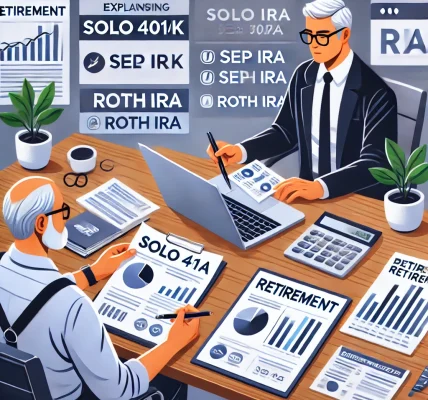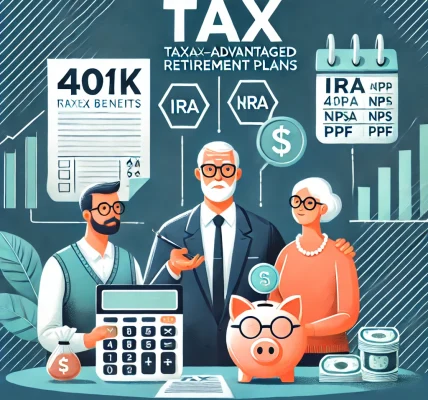Retirement planning is one of the most important steps you can take for a secure financial future. Choosing the right retirement plan ensures that your golden years are filled with comfort and peace of mind. But with so many options available, how do you choose the best retirement plan for your future? In this guide, we’ll explore the factors to consider, types of plans, and how to make an informed decision.
1. Understand Your Retirement Goals
Before diving into the specifics of retirement plans, take a moment to reflect on your goals. Ask yourself:
- What lifestyle do you envision after retirement? Do you plan to travel, downsize your home, or live a more relaxed life?
- At what age do you want to retire? Will you be able to retire comfortably at your desired age with your savings?
- How long do you expect to live after retirement? It’s essential to plan for a retirement that could last 20-30 years or more.
These questions will help you determine how much you need to save and what kind of retirement plan will meet your financial needs.
2. Types of Retirement Plans to Consider
There are various types of retirement plans available, and each one has its unique advantages. Let’s explore the most popular ones:
1. Employer-Sponsored Retirement Plans (401(k), 403(b))
If you’re employed, your employer may offer a retirement savings plan, such as a 401(k) or 403(b). These plans allow you to save directly from your paycheck, often with matching contributions from your employer. Some key benefits include:
- Tax Benefits: Your contributions are made before taxes, which lowers your taxable income.
- Employer Match: Many employers match your contributions up to a certain limit, giving you free money toward your retirement.
- Automatic Savings: Contributions are automatically deducted, making it easier to save consistently.
2. Individual Retirement Accounts (IRA)
An IRA is a personal retirement account that you can open with a financial institution. There are two main types:
- Traditional IRA: Contributions are tax-deductible, and your investments grow tax-deferred. Taxes are paid upon withdrawal.
- Roth IRA: Contributions are made with after-tax dollars, but withdrawals are tax-free in retirement.
Both IRAs provide flexibility, but each comes with different eligibility rules, contribution limits, and tax advantages.
3. Pension Plans
Though less common today, some employers still offer pension plans. These provide a fixed monthly income after retirement based on factors such as your salary and years of service. A pension plan can offer financial stability, but the availability of this option depends on your employer.
4. Annuities
Annuities are insurance products that provide guaranteed income for a specified period or for the rest of your life. Annuities come in various forms:
- Fixed Annuities: Provide predictable, fixed payments.
- Variable Annuities: Payments vary depending on the performance of the underlying investments.
Annuities can be a good choice if you’re looking for guaranteed income in retirement, but be mindful of fees and terms.
5. Government-Sponsored Plans (Social Security)
Social Security is a critical source of income for many retirees. While it may not be enough to fully fund your retirement, it plays a vital role in your overall financial plan. Understanding how Social Security benefits work and when to claim them can help you maximize your benefits.
3. Consider Your Risk Tolerance and Investment Options
When choosing a retirement plan, it’s essential to assess your risk tolerance. Some retirement plans, like 401(k)s and IRAs, allow you to invest in various assets, such as stocks, bonds, and mutual funds. If you’re younger, you might choose riskier investments for higher potential returns, but if you’re closer to retirement, you may prefer safer, more stable investments.
- High-Risk Investments: Higher potential for growth but also higher risk. Ideal for younger individuals with a longer time horizon.
- Low-Risk Investments: Lower returns but more stability. Ideal for those closer to retirement or those seeking less volatility.
4. Tax Considerations
Taxation is an important factor when selecting a retirement plan. Different plans offer different tax benefits, and you must choose one that aligns with your financial goals:
- Tax-Deferred Plans (Traditional IRA, 401(k)): Taxes are paid upon withdrawal, allowing you to invest more upfront.
- Tax-Free Plans (Roth IRA): You pay taxes upfront but avoid them when withdrawing in retirement.
Understand the tax implications of each plan to make an informed decision that helps minimize your tax burden in retirement.
5. Plan for Healthcare Costs in Retirement
Healthcare can be one of the most significant expenses in retirement. Many retirement plans do not cover healthcare costs, so it’s crucial to plan ahead. Consider these options:
- Health Savings Accounts (HSAs): These accounts allow you to save for medical expenses tax-free.
- Medicare: Be sure to understand your eligibility for Medicare and its coverage options when you turn 65.
6. Review and Adjust Your Plan Regularly
Your retirement plan is not a one-time decision. As your life circumstances change, so should your plan. Regularly review your retirement strategy and make adjustments if necessary. This might include increasing contributions, rebalancing your portfolio, or changing your retirement age.
Conclusion: Make Your Retirement Dreams a Reality
Choosing the best retirement plan for your future requires careful consideration of your goals, risk tolerance, and available options. Start early, stay consistent, and regularly assess your plan to ensure that you are on track for a secure retirement. With the right strategy in place, you can look forward to a stress-free and enjoyable retirement.




